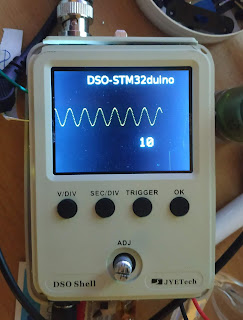DSO 150: Timebase
The voltage management was designed by Jyetech to reflect the values they wanted to use. The resistors have the right values to form good voltage dividers, and as a result, converting between them and volt/div is pretty simple. It's not so simple for the timebase. Ideally, we'd like standard value, such as 10us/div, 50ms/div etc... Since we use 24 pixels per div, that would mean 10us/24, 50ms/24 etc... sampling frequency Unfortunately, we don't have the required flexibility as far as sampling frequencies are concerned. Here is a table of all the available values (prescaler x sampling time) 2 4 6 8 1,5 0,39 0,78 1,17 1,56 7,5 0,56 1,11 1,67 2,22 13,5 0,72 1,44 2,17 2,89 28,5 1,14 2,28 3,42 4,56 41,5 1,50 3,00 4,50 6,00 55,5 1,89 3,78 5,67 7,56 71,5 2,33 4,67 7,00 9,33 239,5 7,00 14,00 21,00 28,00 Time/sample (us) Multiple by 24, to get the time/div Not so great in terms of user exper

